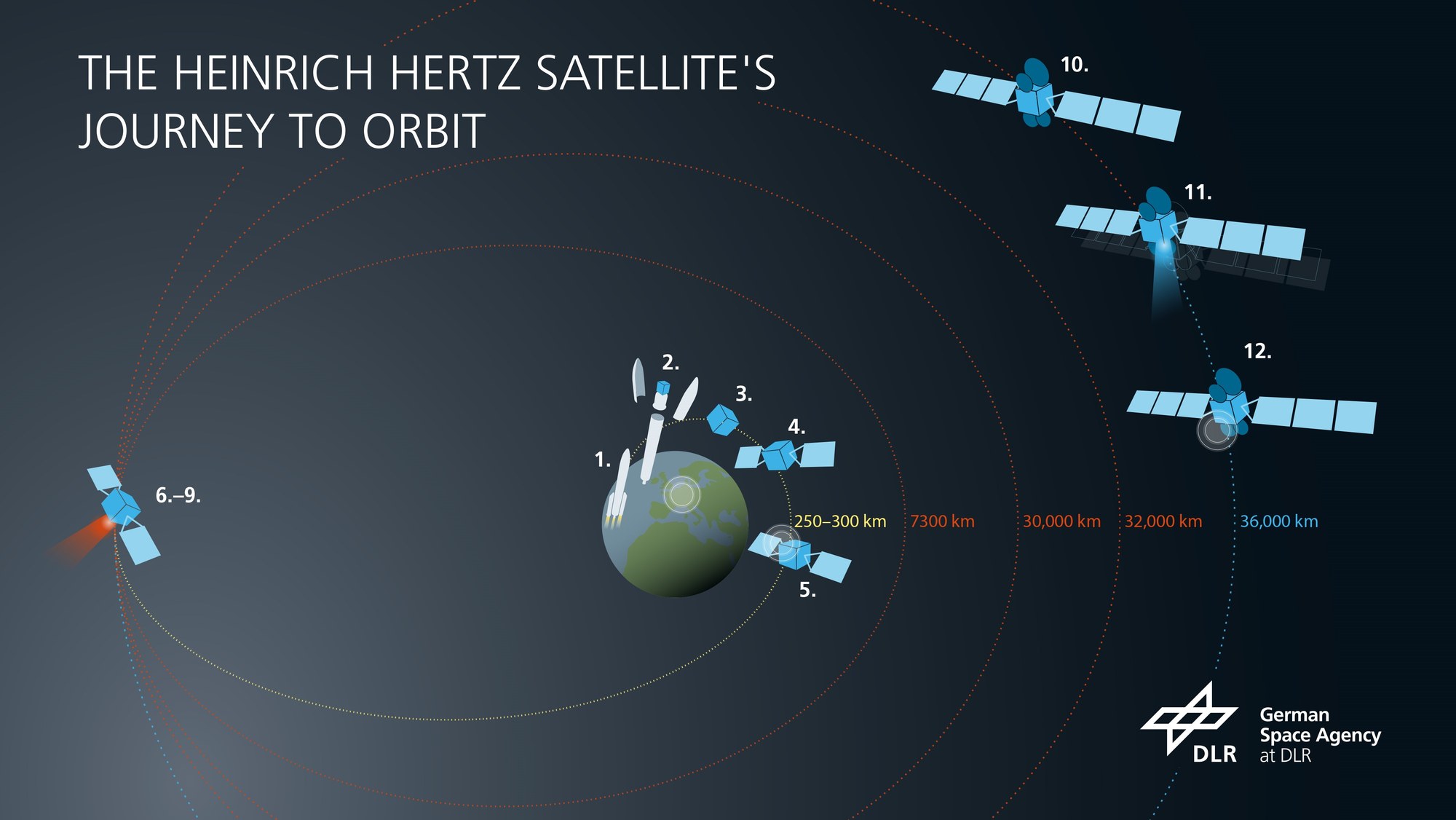The journey of the Heinrich Hertz satellite
The journey of the Heinrich Hertz satellite
The Heinrich Hertz satellite will launch from the European spaceport in Kourou on the last Ariane 5 flight (1). Approximately 30 minutes after launch, the satellite will separate from the upper stage. Heinrich Hertz will be released at an altitude of between 250 and 300 kilometres. The half-shells of the Ariane payload fairing will then drift away (2). The upper stage, including the SYLDA separation structure and the satellite, will then be jettisoned. At this point, the satellite will be tumbling (3). One section of the three-section solar sails will then unfold from each side of the satellite and begin to generate power (4). At this stage, there will be a total of seven ground stations on Earth trying to reach Heinrich Hertz. The antennas at the front and back of the satellite will receive the signal from one of these ground stations (5). Once communication has been established with the satellite, the chemical thrusters will ignite for the first time. The short chemical burns (6-9) will take place while the satellite is at its furthest point from Earth to reshape the highly elliptical orbit into a circular geostationary orbit. Only when in the correct orbit will the other sections of the solar sails unfold (10) and the ion engine be switched on. This engine will later also be used for course correction, which will take place approximately once a week (11). The commands to the satellite will begin being sent from the control centre in Bonn (12). Heinrich Hertz will then be ready for operation.

